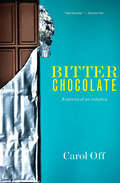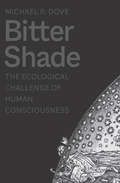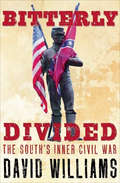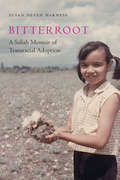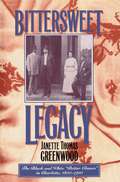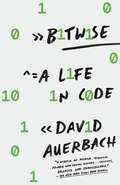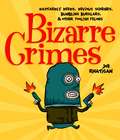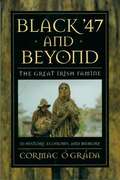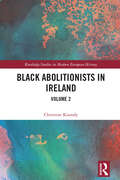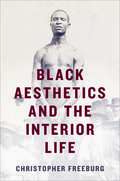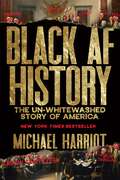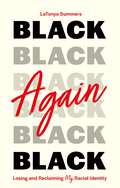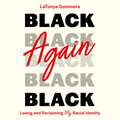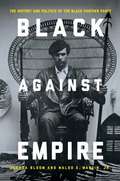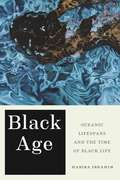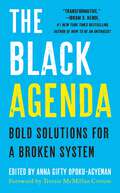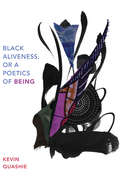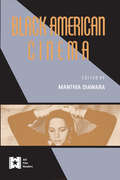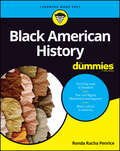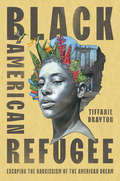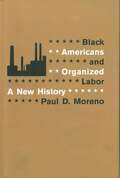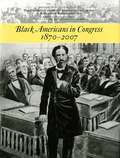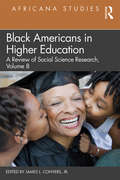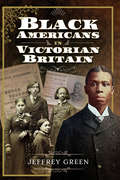- Table View
- List View
Bitter Chocolate: Anatomy of an Industry
by Carol OffThis shocking exposé of the corruption and exploitation at the heart of the multibillion-dollar cocoa industry is &“an astounding eye-opener that takes no prisoners&” (Quill & Quire, starred review). Bitter Chocolate is both an absorbing social history and a passionate investigation into an industry that has institutionalized abuse as it indulges our whims. Award-winning journalist Carol Off traces the fascinating evolution of chocolate from the sixteenth century banquet table of Montezuma&’s Aztec court to the bustling factories of Hershey, Cadbury, and Mars. In what will be a shocking revelation to many, Off exposes how slavery and injustice remain a key aspect of its production even today. In the Ivory Coast, the world&’s leading producer of cocoa beans, profits from the multibillion-dollar chocolate industry fuel bloody civil war and widespread corruption. Faced with pressure from a crushing &“cocoa cartel&” demanding more beans for less money, poor farmers have turned to the cheapest labor pool possible: thousands of indentured children who pick the beans but have never themselves known the taste of chocolate. &“Bitter Chocolate is less a book about chocolate than it is a study of racism, imperialism and oppression as told through the lens of a single commodity.&” —The Globe and Mail (Toronto)
Bitter Melon: Inside America's Last Rural Chinese Town
by Jeff Gillenkirk James MotlowDuring the mid 1970s, James Motlow lived in the Sacramento Delta village of Locke, where he found himself one of the only Caucasians in the community. The village had been founded in 1915 by Chinese Americans who sought a haven from discrimination and harassment in nearby communities. By the 1970s only the older generation remained to tell the story of Locke's founding and boom years. This book is based on oral histories of men and women who lived in Locke and recall the days of gambling, prostitution, missionaries, and Chinese festivals.
Bitter Shade: The Ecological Challenge of Human Consciousness (Yale Agrarian Studies Series)
by Michael R. DoveA seminal anthropological work on the paradoxical relationship between human consciousness and the environment This book asks an age-old question about the relationship between human consciousness and the environment: How do we think about our own thoughts and actions? How can we transcend the exigencies of daily life? How can we achieve sufficient distance from our own everyday realities to think and act more sustainably? To address these questions, Michael R. Dove draws on the results of decades of research in South and Southeast Asia on how local cultures have circumvented the &“curse of consciousness&”—the paradox that we cannot completely comprehend the ecosystem of which we are part. He distills from his ethnographic, ecological, and historical research three principles: perspectivism (seeing oneself from outside oneself), metamorphosis (becoming something that one is not), and mimesis (copying something that one is not), which help a society to transcend the hubris and myopia of everyday existence and achieve greater insight into its ecosystem.
Bitterly Divided: The South's Inner Civil War
by David WilliamsThe little-known history of anti-secession Southerners: &“Absolutely essential Civil War reading.&” —Booklist, starred review Bitterly Divided reveals that the South was in fact fighting two civil wars—the external one that we know so much about, and an internal one about which there is scant literature and virtually no public awareness. In this fascinating look at a hidden side of the South&’s history, David Williams shows the powerful and little-understood impact of the thousands of draft resisters, Southern Unionists, fugitive slaves, and other Southerners who opposed the Confederate cause. &“This fast-paced book will be a revelation even to professional historians. . . . His astonishing story details the deep, often murderous divisions in Southern society. Southerners took up arms against each other, engaged in massacres, guerrilla warfare, vigilante justice and lynchings, and deserted in droves from the Confederate army . . . Some counties and regions even seceded from the secessionists . . . With this book, the history of the Civil War will never be the same again.&” —Publishers Weekly, starred review &“Most Southerners looked on the conflict with the North as &‘a rich man&’s war and a poor man&’s fight,&’ especially because owners of 20 or more slaves and all planters and public officials were exempt from military service . . . The Confederacy lost, it seems, because it was precisely the kind of house divided against itself that Lincoln famously said could not stand.&” —Booklist, starred review
Bitterroot: A Salish Memoir of Transracial Adoption (American Indian Lives)
by Susan Devan HarnessIn Bitterroot Susan Devan Harness traces her journey to understand the complexities and struggles of being an American Indian child adopted by a white couple and living in the rural American West. When Harness was fifteen years old, she questioned her adoptive father about her “real” parents. He replied that they had died in a car accident not long after she was born—except they hadn’t, as Harness would learn in a conversation with a social worker a few years later. Harness’s search for answers revolved around her need to ascertain why she was the target of racist remarks and why she seemed always to be on the outside looking in. New questions followed her through college and into her twenties when she started her own family. Meeting her biological family in her early thirties generated even more questions. In her forties Harness decided to get serious about finding answers when, conducting oral histories, she talked with other transracial adoptees. In her fifties she realized that the concept of “home” she had attributed to the reservation existed only in her imagination. Making sense of her family, the American Indian history of assimilation, and the very real—but culturally constructed—concept of race helped Harness answer the often puzzling questions of stereotypes, a sense of nonbelonging, the meaning of family, and the importance of forgiveness and self-acceptance. In the process Bitterroot also provides a deep and rich context in which to experience life.
Bittersweet Legacy
by Janette Thomas GreenwoodBittersweet Legacy is the dramatic story of the relationship between two generations of black and white southerners in Charlotte, North Carolina, from 1850 to 1910. Janette Greenwood describes the interactions between black and white business and professional people--the 'better classes,' as they called themselves. Her book paints a surprisingly complex portrait of race and class relations in the New South and demonstrates the impact of personal relationships, generational shifts, and the interplay of local, state, and national events in shaping the responses of black and white southerners to each other and the world around them. Greenwood argues that concepts of race and class changed significantly in the late nineteenth century. Documenting the rise of interracial social reform movements in the 1880s, she suggests that the 'better classes' briefly created an alternative vision of race relations. The disintegration of the alliance as a result of New South politics and a generational shift in leadership left a bittersweet legacy for Charlotte that would weigh heavily on its citizens well into the twentieth century.
Bitwise: A Life in Code
by David AuerbachAn exhilarating, elegant memoir and a significant polemic on how computers and algorithms shape our understanding of the world and of who we are Bitwise is a wondrous ode to the computer languages and codes that captured technologist David Auerbach’s imagination. With a philosopher’s sense of inquiry, Auerbach recounts his childhood spent drawing ferns with the programming language Logo on the Apple IIe, his adventures in early text-based video games, his education as an engineer, and his contributions to instant messaging technology developed for Microsoft and the servers powering Google’s data stores. A lifelong student of the systems that shape our lives—from the psychiatric taxonomy of the Diagnostic and Statistical Manual to how Facebook tracks and profiles its users—Auerbach reflects on how he has experienced the algorithms that taxonomize human speech, knowledge, and behavior and that compel us to do the same. Into this exquisitely crafted, wide-ranging memoir of a life spent with code, Auerbach has woven an eye-opening and searing examination of the inescapable ways in which algorithms have both standardized and coarsened our lives. As we engineer ever more intricate technology to translate our experiences and narrow the gap that divides us from the machine, Auerbach argues, we willingly erase our nuances and our idiosyncrasies—precisely the things that make us human.
Bizarre Crimes: DASTARDLY DEEDS, DEVIOUS SCHEMES, BUMBLING BURGLARS, & OTHER FOOLISH FELONS
by Joe RhatiganBizarre Crimes: DASTARDLY DEEDS, DEVIOUS SCHEMES, BUMBLING BURGLARS, & OTHER FOOLISH FELONS
Black '47 And Beyond: The Great Irish Famine In History, Economy, And Memory
by Cormac Ó GrádaHere Ireland's premier economic historian and one of the leading authorities on the Great Irish Famine examines the most lethal natural disaster to strike Europe in the nineteenth century. Between the mid-eighteenth and early-nineteenth centuries, the food source that we still call the Irish potato had allowed the fastest population growth in the whole of Western Europe. As vividly described in #65533; Gr#65533;da's new work, the advent of the blight phytophthora infestans transformed the potato from an emblem of utility to a symbol of death by starvation. The Irish famine peaked in Black '47, but it brought misery and increased mortality to Ireland for several years. Central to Irish and British history, European demography, the world history of famines, and the story of American immigration, the Great Irish Famine is presented here from a variety of new perspectives. Moving away from the traditional narrative historical approach to the catastrophe, #65533; Gr#65533;da concentrates instead on fresh insights available through interdisciplinary and comparative methods. He highlights several economic and sociological features of the famine previously neglected in the literature, such as the part played by traders and markets, by medical science, and by migration. Other topics include how the Irish climate, usually hospitable to the potato, exacerbated the failure of the crops in 1845-1847, and the controversial issue of Britain's failure to provide adequate relief to the dying Irish. #65533; Gr#65533;da also examines the impact on urban Dublin of what was mainly a rural disaster and offers a critical analysis of the famine as represented in folk memory and tradition. The broad scope of this book is matched by its remarkable range of sources, published and archival. The book will be the starting point for all future research into the Irish famine.
Black Abolitionists in Ireland: Volume 2 (Routledge Studies in Modern European History)
by Christine KinealyBuilding on the narratives explored in volume one, this publication recovers the story of a further seven Black visitors to Ireland in the decades prior to the American Civil War.This volume examines each of these seven activists and artists, and how their unique and diverse talents contributed to the movement to abolish enslavement and to the demand for Black equality. In an era that witnessed the rise of minstrelsy, they provided a powerful counter argument to the lie of Black inferiority. Moreover, their interactions with Irish abolitionists helped to build a strong transatlantic movement that had a global reach and impact. The lives explored are: Ira Aldridge (the African Roscius), William Henry Lane (Master Juba), William P. Powell, Elizabeth Greenfield (the Black Swan), Reuben Nixon, James Watkins and William H. Day. Individually and collectively they demonstrated the agency and power of Black involvement in the search for social justice.This book will be of value to students and scholars alike interested in modern European history and social and cultural history.
Black Aesthetics and the Interior Life
by Christopher FreeburgChristopher Freeburg’s Black Aesthetics and the Interior Life offers a crucial new reading of a neglected aspect of African American literature and art across the long twentieth century. Rejecting the idea that the most dehumanizing of black experiences, such as lynching or other racial violence, have completely robbed victims of their personhood, Freeburg rethinks what it means to be a person in the works of black artists. This book advances the idea that individual persons always retain the ability to withhold, express, or change their ideas, and this concept has profound implications for long-held assumptions about the relationship between black interior life and black collective political interests.Examining an array of seminal black texts—from Ida B. Wells’s antilynching pamphlets to works by Richard Wright, Nina Simone, and Toni Morrison—Freeburg demonstrates that the personhood represented by these writers unsettles rather than automatically strengthens black subjects’ relationships to political movements such as racial uplift, civil rights, and black nationalism. He shows how black artists illuminate the challenges of racial collectivity while stressing the vital stakes of individual personhood. In his challenge to current African Americanist criticism, Freeburg makes a striking contribution to our understanding of African American literature and culture.
Black AF History: The Un-Whitewashed Story of America
by Michael HarriotNEW YORK TIMES BESTSELLER From acclaimed columnist and political commentator Michael Harriot, a searingly smart and bitingly hilarious retelling of American history that corrects the record and showcases the perspectives and experiences of Black Americans.America’s backstory is a whitewashed mythology implanted in our collective memory. It is the story of the pilgrims on the Mayflower building a new nation. It is George Washington’s cherry tree and Abraham Lincoln’s log cabin. It is the fantastic tale of slaves that spontaneously teleported themselves here with nothing but strong backs and negro spirituals. It is a sugarcoated legend based on an almost true story.It should come as no surprise that the dominant narrative of American history is blighted with errors and oversights—after all, history books were written by white men with their perspectives at the forefront. It could even be said that the devaluation and erasure of the Black experience is as American as apple pie.In Black AF History, Michael Harriot presents a more accurate version of American history. Combining unapologetically provocative storytelling with meticulous research based on primary sources as well as the work of pioneering Black historians, scholars, and journalists, Harriot removes the white sugarcoating from the American story, placing Black people squarely at the center. With incisive wit, Harriot speaks hilarious truth to oppressive power, subverting conventional historical narratives with little-known stories about the experiences of Black Americans. From the African Americans who arrived before 1619 to the unenslavable bandit who inspired America’s first police force, this long overdue corrective provides a revealing look into our past that is as urgent as it is necessary. For too long, we have refused to acknowledge that American history is white history. Not this one. This history is Black AF.
Black Again: Losing and Reclaiming My Racial Identity
by LaTonya Summers"I was driven by the belief that if I wanted to go somewhere I'd need to be something other than Black."LaTonya Summers was only six years old the first time she unconsciously tried to be "more white". Recollecting experiences from her childhood in foster care through to her life today as an Assistant Professor and mother, LaTonya examines how her perception of self was affected by internalized racism and led her to adopt white norms - influencing everything from her music and clothing choices to her speech and values. Join LaTonya in her journey of realization - how all those years assimilating, stretching and pressing for whiteness harmed her, and how, in a world that sees her as Black, it's about time she did too. Discover how LaTonya has truly "made it" by embracing and endorsing the Afrocentric norms and values that have sustained her and her family better than any white picket fence ever could.
Black Again: Losing and Reclaiming My Racial Identity
by LaTonya SummersA memoir exploring the psychological impact of cultural assimilation and internalized racism"I was driven by the belief that if I wanted to go somewhere I'd need to be something other than Black."LaTonya Summers was only six years old the first time she unconsciously tried to be "more white". Recollecting experiences from her childhood in foster care through to her life today as an Assistant Professor and mother, LaTonya examines how her perception of self was affected by internalized racism and led her to adopt white norms - influencing everything from her music and clothing choices to her speech and values. Join LaTonya in her journey of realization - how all those years assimilating, stretching and pressing for whiteness harmed her, and how, in a world that sees her as Black, it's about time she did too. Discover how LaTonya has truly "made it" by embracing and endorsing the Afrocentric norms and values that have sustained her and her family better than any white picket fence ever could.(P)2023 Jessica Kingsley Publishers
Black against Empire
by Joshua Bloom Waldo E. Martin Jr.In Oakland, California, in 1966, community college students Bobby Seale and Huey Newton armed themselves, began patrolling the police, and promised to prevent police brutality. Unlike the Civil Rights Movement that called for full citizenship rights for blacks within the U.S., the Black Panther Party rejected the legitimacy of the U.S. government and positioned itself as part of a global struggle against American imperialism. In the face of intense repression, the Party flourished, becoming the center of a revolutionary movement with offices in 68 U.S. cities and powerful allies around the world. Black Against Empire is the first comprehensive overview and analysis of the history and politics of the Black Panther Party. The authors analyze key political questions, such as why so many young black people across the country risked their lives for the revolution, why the Party grew most rapidly during the height of repression, and why allies abandoned the Party at its peak of influence. Bold, engrossing, and richly detailed, this book cuts through the mythology and obfuscation, revealing the political dynamics that drove the explosive growth of this revolutionary movement, and its disastrous unraveling. Informed by twelve years of meticulous archival research, as well as familiarity with most of the former Party leadership and many rank-and-file members, this book is the definitive history of one of the greatest challenges ever posed to American state power.
Black Age: Oceanic Lifespans and the Time of Black Life
by Habiba IbrahimHONORABLE MENTION, HARRY SHAW AND KATRINA HAZZARD-DONALD AWARD FOR OUTSTANDING WORK IN AFRICAN-AMERICAN POPULAR CULTURE STUDIES, GIVEN BY THE POP CULTURE ASSOCIATIONA view of transatlantic slavery’s afterlife and modern Blackness through the lens of ageAlthough more than fifty years apart, the murders of Emmett Till and Trayvon Martin share a commonality: Black children are not seen as children. Time and time again, excuses for police brutality and aggression—particularly against Black children— concern the victim “appearing” as a threat. But why and how is the perceived “appearance” of Black persons so completely separated from common perceptions of age and time? Black Age: Oceanic Lifespans and the Time of Black Life posits age, life stages, and lifespans as a central lens through which to view Blackness, particularly with regard to the history of transatlantic slavery. Focusing on Black literary culture of the late twentieth and early twenty-first centuries, Habiba Ibrahim examines how the history of transatlantic slavery and the constitution of modern Blackness has been reimagined through the embodiment of age. She argues that Black age—through nearly four centuries of subjugation— has become contingent, malleable, and suited for the needs of enslavement. As a result, rather than the number of years lived or a developmental life stage, Black age came to signify exchange value, historical under-development, timelessness, and other fantasies borne out of Black exclusion from the human.Ibrahim asks: What constitutes a normative timeline of maturation for Black girls when “all the women”—all the canonically feminized adults—“are white”? How does a “slave” become a “man” when adulthood is foreclosed to Black subjects of any gender? Black Age tracks the struggle between the abuses of Black exclusion from Western humanism and the reclamation of non-normative Black life, arguing that, if some of us are brave, it is because we dare to live lives considered incomprehensible within a schema of “human time.”
The Black Agenda: Bold Solutions for a Broken System
by Anna Gifty Opoku-Agyeman"The Black Agenda mobilizes top Black experts from across the country to share transformative perspectives on how to deploy anti-racist ideas and policies into everything from climate policy to criminal justice to healthcare. This book will challenge what you think is possible by igniting long overdue conversations around how to enact lasting and meaningful change rooted in racial justice." —Ibram X. Kendi, #1 New York Times bestselling author of How to Be an Antiracist and Stamped From the BeginningFrom ongoing reports of police brutality to the disproportionate impact COVID-19 has had on Black Americans, 2020 brought a renewed awareness to the deep-rootedness of racism and white supremacy in every facet of American life. Edited by Anna Gifty Opoku-Agyeman, The Black Agenda is the first book of its kind—a bold and urgent move towards social justice through a profound collection of essays featuring Black scholars and experts across economics, education, health, climate, and technology. It speaks to the question "What's next for America?" on the subjects of policy-making, mental health, artificial intelligence, climate movement, the future of work, the LGBTQ community, the criminal legal system, and much more. Essayists including Dr. Sandy Darity, Dr. Hedwig Lee, Mary Heglar, and Janelle Jones present groundbreaking ideas ranging from Black maternal and infant health to reparations to AI bias to inclusive economic policy, with the potential to uplift and heal not only Black America, but the entire country.
Black Aliveness, or A Poetics of Being (Black Outdoors: Innovations in the Poetics of Study)
by Kevin QuashieIn Black Aliveness, or A Poetics of Being, Kevin Quashie imagines a Black world in which one encounters Black being as it is rather than only as it exists in the shadow of anti-Black violence. As such, he makes a case for Black aliveness even in the face of the persistence of death in Black life and Black study. Centrally, Quashie theorizes aliveness through the aesthetics of poetry, reading poetic inhabitance in Black feminist literary texts by Lucille Clifton, Audre Lorde, June Jordan, Toni Morrison, and Evie Shockley, among others, showing how their philosophical and creative thinking constitutes worldmaking. This worldmaking conceptualizes Blackness as capacious, relational beyond the normative terms of recognition—Blackness as a condition of oneness. Reading for poetic aliveness, then, becomes a means of exploring Black being rather than nonbeing and animates the ethical question “how to be.” In this way, Quashie offers a Black feminist philosophy of being, which is nothing less than a philosophy of the becoming of the Black world.
Black American Cinema (AFI Film Readers)
by Manthia DiawaraThis is the first major collection of criticism on Black American cinema. From the pioneering work of Oscar Micheaux and Wallace Thurman to the Hollywood success of Spike Lee, Black American filmmakers have played a remarkable role in the development of the American film, both independent and mainstream.In this volume, the work of early Black filmmakers is given serious attention for the first time. Individual essays consider what a Black film tradition might be, the relation between Black American filmmakers and filmmakers from the diaspora, the nature of Black film aesthetics, the artist's place within the community, and the representation of a Black imaginary. Black American Cinema also uncovers the construction of Black sexuality on screen, the role of Black women in independent cinema, and the specific question of Black female spectatorship. A lively and provocative group of essays debate the place and significance of Spike LeeOf crucial importance are the ways in which the essays analyze those Black directors who worked for Hollywood and whose films are simplistically dismissed as sell-outs, to the Hollywood "master narrative," as well as those "crossover" filmmakers whose achievements entail a surreptitious infiltration of the studios. Black American Cinema demonstrates the wealth of the Black contribution to American film and the complex course that contribution has taken.Contributors: Houston Baker, Jr., Toni Cade Bambara, Amiri Baraka, Jacquie Bobo, Richard Dyer, Jane Gaines, Henry Louis Gates, Jr., Ron Green, Ed Guerrero, bell hooks, Phyllis Klotman, Ntongele Masilela, Clyde Taylor, and Michele Wallace.
Black American History For Dummies
by Ronda Racha PenriceGo deeper than the Black History you may think you know! Black American History For Dummies reveals the terrors and struggles and celebrates the triumphs of Black Americans. This handy book goes way beyond what you may have studied in school, digging into the complexities and the intrigues that make up Black America. From slavery and the Civil Rights movement to Black Wall Street, Juneteenth, redlining, and Black Lives Matter, this book offers an accessible resource for understanding the facts and events critical to Black history in America. The history of Black Americans is the history of Americans; Americans dance to Black music, read Black literature, watch Black movies, and whether they know it or not reap the benefits of the vibrant political, athletic, and sociological contributions of Black Americans. With this book, you can dive into history, culture, and beyond. See how far there’s yet to go in the approach to studying Black American culture and ending racism. Get the authoritative story on the growth and evolution of Black America from slavery, Reconstruction, Jim Crow, the Civil Rights era through to today Discover the Black artists, musicians, athletes, and leaders who have made the United States what it is Develop a fuller understanding of concerns about police brutality and other front-and-center race issues Find out how every aspect of American life connects to Black history Black American History For Dummies is for anyone who needs to learn or re-learn the true history about Black Americans.
Black American Refugee: Escaping the Narcissism of the American Dream
by Tiffanie DraytonNamed "most anticipated" book of February by Marie Claire, Essence, and A.V. Club"Drayton explores the ramifications of racism that span generations, global white supremacy, and the pitfalls of American culture."—Shondaland After following her mother to the US at a young age to pursue economic opportunities, one woman must come to terms with the ways in which systematic racism and resultant trauma keep the American Dream inaccessible to Black people.In the early '90s, young Tiffanie Drayton and her siblings left Trinidad and Tobago to join their mother in New Jersey, where she'd been making her way as a domestic worker, eager to give her children a shot at the American Dream. At first, life in the US was idyllic. But chasing good school districts with affordable housing left Tiffanie and her family constantly uprooted--moving from Texas to Florida then back to New Jersey. As Tiffanie came of age in the suburbs, she began to ask questions about the binary Black and white American world. Why were the Black neighborhoods she lived in crime-ridden, and the multicultural ones safe? Why were there so few Black students in advanced classes at school, if there were any advanced classes at all? Why was it so hard for Black families to achieve stability? Why were Black girls treated as something other than worthy?Ultimately, exhausted by the pursuit of a "better life" in America, twenty-year old Tiffanie returns to Tobago. She is suddenly able to enjoy the simple freedom of being Black without fear, and imagines a different future for her own children. But then COVID-19 and widely publicized instances of police brutality bring America front and center again. This time, as an outsider supported by a new community, Tiffanie grieves and rages for Black Americans in a way she couldn't when she was one. An expansion of her New York Times piece of the same name, Black American Refugee examines in depth the intersection of her personal experiences and the broader culture and historical ramifications of American racism and global white supremacy. Through thoughtful introspection and candidness, Tiffanie unravels the complex workings of the people in her life, including herself, centering Black womanhood, and illuminating the toll a lifetime of racism can take. Must Black people search beyond the shores of the "land of the free" to realize emancipation? Or will the voices that propel America's new reckoning welcome all dreamers and dreams to this land?
Black Americans and Organized Labor: A New History
by Paul D. MorenoIn Black Americans and Organized Labor, Paul D. Moreno offers a bold reinterpretation of the role of race and racial discrimination in the American labor movement. Moreno applies insights of the law-and-economics movement to formulate a powerfully compelling labor-race theorem of elegant simplicity: White unionists found that race was a convenient basis on which to do what unions do -- control the labor supply. Not racism pure and simple but "the economics of discrimination" explains historic black absence and under-representation in unions. Moreno's sweeping reexamination stretches from the antebellum period to the present, integrating principal figures such as Frederick Douglass and Samuel Gompers, Isaac Myers and Booker T. Washington, and W. E. B. Du Bois and A. Philip Randolph. He traces changing attitudes and practices during the simultaneous black migration to the North and consolidation of organized labor's power, through the confusing and conflicted post-World War II period, during the course of the civil rights movement, and into the era of affirmative action. Maneuvering across a wide span of time and a broad array of issues, Moreno brings remarkable clarity to the question of the importance of race in unions. He impressively weaves together labor, policy, and African American history into a cogent, persuasive revisionist study that cannot be ignored.
Black Americans in Congress, 1870-2007
by Office Of History Matthew Wasniewski Preservation U.S. House of RepresentativesBlack Americans in Congress, 1870-2007, is a comprehensive history of the more than 120 African Americans who have served in the United States Congress. Written for a general audience, this book contains a profile of each African-American Member, including notables such as Hiram Revels, Joseph Rainey, Oscar De Priest, Adam Clayton Powell, Shirley Chisholm, Gus Hawkins, and Barbara Jordan. Individual profiles are introduced by contextual essays that explain major events in congressional and U. S. history The volume also features: Pictures--including rarely seen historical images--of each African American who has served in Congress Bibliographies and references to manuscript collections for each Member Statistical graphs and charts Index
Black Americans in Higher Education: Africana Studies: A Review of Social Science Research, Volume 8
by James L. Conyers Jr.Narrating the realities of teacher burnout, the reception of a Black intelligentsia, and HIV awareness in local communities, Black Americans in Higher Education, the eighth volume of Africana Studies, explores higher education across the United States as inextricably related to contemporary issues facing African Americans. Featuring the work of Terrell M. Thomas, Gwendolyn D. Alfred, Kevin B. Thompson, Jasmine Williams, TaNeisha R. Page, Drew D. Brown, Grace A. Loudd, Derek Wilson, DaVonte Lyons, Jacqueline Gerard, Tanisha Stanford, Lanetta Dickens, Brittany C. Slatton, and James L. Conyers, Jr., this collection presents a deeper, cross-cultural understanding of higher education that conveys the many ways its intersections can promote the agency of Black Americans.
Black Americans in Victorian Britain
by Jeffrey GreenThe first study of its kind, exploring the experiences of some of the black American citizens who ventured forth to Britain in the nineteenth century. With the arrival of black Americans in Britain during the Victorian era, residents of villages, towns, and cities from Dorchester to Cambridge, Belfast to Hull, and Dumfries to Brighton heard about slavery and repression in the US, and learned of the diverse ambitions and achievements of black Americans both at home and overseas. Across the country, numerous publications were sold to the curious, and lectures were crowded. Ultimately, many of these refugees settled in Britain; some worked as domestic servants, others qualified as doctors, wrote books, taught, or labored in factories and on ships while their youngsters went to school. We might not think of black immigrants when we consider the population of Victorian Britain, but this is a shameful oversight. Their presence was important and their stories, recorded here, are both fascinating and powerful. Black Americans in Victorian Britain documents the experience of refugees, settlers, and their families as well as pioneering entertainers in both minstrel shows and stage adaptations of the 1850s bestselling novel Uncle Tom&’s Cabin. This is a timely and engaging new perspective on both Victorian and Afro-American history.
